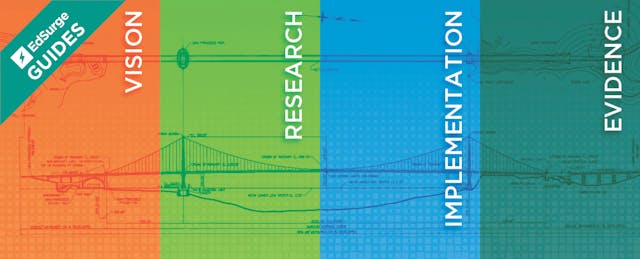Think of your favorite students. Chances are they were engaged, creative, motivated. What was compelling about them? Did they have courage and tenacity to reach for the stars? Were they creative and so helped to keep the classroom interesting? Were they focused and engaged because they had found something about learning they loved? Because they had a clear goal? How do educators find the right combination of people, strategies and support to create an environment where all students can have the best aspects of the favorite students and thus flourish?
Take a look at the short videos of "Powerful Learners" on the right.
When we talk about “personalizing” learning, we're asking: How do we create the conditions that will let every student become a powerful--and inspiring--learner.
This guide pulls together many materials—the frameworks, tools, resources & reports, projects and stories —to share how educators are putting students at the center of learning. We won’t stop here; we’d like to hear your story, too! Think we’ve missed something? Want to share what you’re doing in your school or district to better tune learning to students? Please let us know at feedback@edsurge.com. Just put “PL Story” into the subject line.
We are, truly, all learning here.
-- S. Michele Fry, Guide Editor
Vision: How to Craft One
Creating a vision and plan for where a school, district or community will take its education system is like designing a 5,000-piece puzzle. Getting that design right is crucial. To personalize education for every student, school leaders need to account for equity, student agency, buy-in among staff, families and communities, and the resulting operational changes. Truly personalizing education means different school systems will take different approaches. Consider the frameworks offered here, all of which describe perspectives on personalizing learning. Then explore tools aimed at helping you craft a vision, as well as the reports and stories of how others are tackling this challenge.
Research: Here's What We Know
We’re learning a lot about how we learn. The deeper the science, the more we realize we can do education better. What’s more, the more we realize that to be effective, we need to see each learner as an individual. Research crucially helps us sort out what works and why. Equally crucial: Incorporating that research into our visions of school models, into the development and use of edtech products as well as our approach to learning. In this section find pieces that are provide the resources and tools to better weave research into learning. Check out studies on issues including leadership, learning systems and edtech products. Also look for networks that encourage educators and edtech developers to connect around research and formulate next steps.
Implementation: Making It Happen
Here’s where we get down to brass tacks. Making a vision real, building a system, hammering out the details takes real and consistent work. When implementing a plan, different school systems will take different approaches: How will they create the data-rich environment right for their community? Where does innovation and creativity fit? How are the roles of students, teachers and parents changing? Here, we share frameworks, resources, services and tools to support putting big ideas about learning into practice, as well as stories that inspire and inform along the way.
Evidence: Proving What Works
What works? Are edtech products doing what they’re advertised to? How do we know? Do different approaches or technologies work well together. You don’t have to be in the “Show Me” state to want to see evidence around what all the efforts and investments are catalyzing.
The edtech industry is still learning how to measure the impact of the changes that school leaders are putting into place. Research is helping to collect data and make sense of the results. Schools are getting better are organizing pilots, at gathering evidence and at making sense of what they see happen.
We still have much to learn. The reports and stories here share some of the lessons and observations made so far. School leaders can also use the resources and tools to contribute to our growing appreciation of what does—and does not—work.


